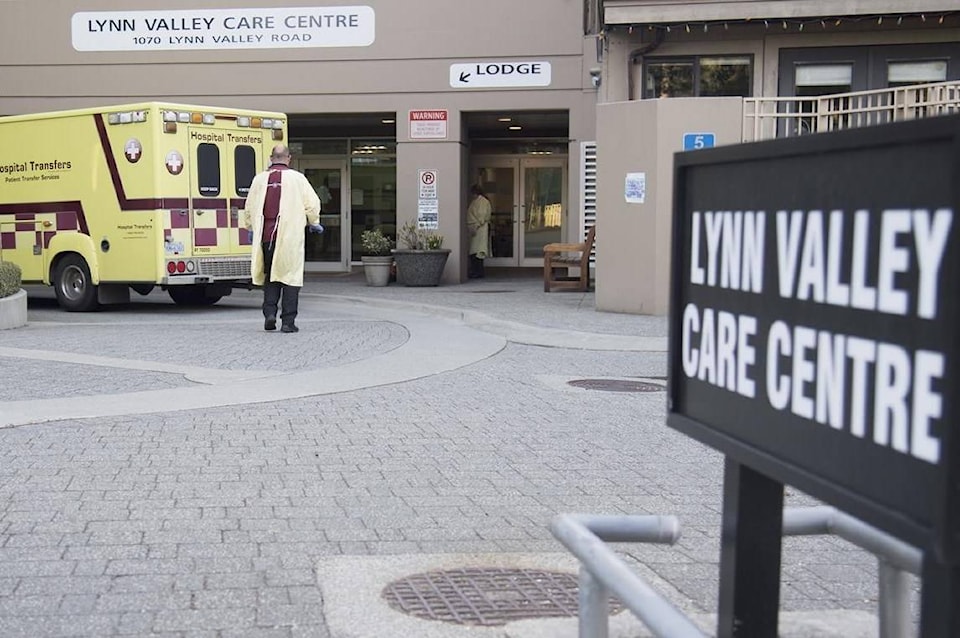A new study finds the proportion of Canadian COVID-19 deaths that have occurred in long-term care facilities is about twice the average of rates from other developed nations.
The analysis released Thursday by the Canadian Institute for Health Information provides a damning snapshot of senior care as of May 25, when LTC residents made up 81 per cent of all reported COVID-19 deaths in the country compared to an average of 42 per cent among all countries studied.
The data compares Canada’s record to that of 16 other countries in the Organisation for Economic Co-operation and Development. The proportion of LTC deaths ranged from less than 10 per cent in Slovenia and Hungary to 31 per cent in the United States to 66 per cent in Spain.
At 5,324, the reported number of LTC deaths in Canada was near the average but data varied widely among countries: from 28 in Australia to 30,000 in the U.S., with more than 10,000 in France, Italy, Spain and the United Kingdom.
Researchers point to limitations that prevent some comparisons — countries vary in COVID-19 testing and reporting practices, and in their definition of long-term care.
In addition, COVID-19 cases are often under-reported and in the case of Italy, data was available from only 52 per cent of the nursing homes operating in the country.
Nevertheless, Tracy Johnson, CIHI’s director of health systems analysis and emerging issues, says the data offers valuable insight into a tragedy many families, caregivers and residents have been trying to illustrate since the pandemic began.
Johnson notes countries that implemented additional LTC precautions at the same time as standard stay-at-home orders had fewer LTC infections and deaths.
That includes Australia, Austria and Slovenia, which ordered broad LTC testing and training, isolation wards to manage clusters, surge staffing, specialized teams and personal protective equipment.
Johnson says the findings suggest such measures could be key to mitigating the impact of a possible second wave.
But for now, she notes several of Canada’s hardest-hit facilities are still grappling with the devastating fallout of existing infections.
“Even if all of these (measures are instituted) there will be other folks who will die because some people are infected right now, still, and the outbreaks are still ongoing,” she says.
“Some of the control measures though will probably help to at least keep the rates the same as they are.”
READ MORE: Canadian Armed Forces members at risk of COVID-19 while on long-term care duty to get extra pay
The contrast in LTC deaths is even more stark between provinces and territories, says the report, which notes LTC deaths represented more than 70 per cent of all COVID-19 deaths in Quebec, Ontario and Alberta and 97 per cent of all deaths in Nova Scotia.
There were none in Newfoundland and Labrador, Prince Edward Island, New Brunswick and the territories at the time of the study. Two LTC residents have since died in New Brunswick.
Dr. Roger Wong, clinical professor of geriatric medicine at the University of British Columbia, says the numbers are “very concerning” and point to long-standing systemic problems that include inadequate staffing and resources and inconsistent standards.
“There needs to be a fundamental reprioritization, focusing attention and resources, time and effort into the sector right away. Because I can tell you that what COVID-19 has shown us in terms of a major lesson is a fragmentation (of) seniors’ care,” Wong says from Vancouver.
“Which means it makes it more difficult for all of us to support our older Canadians with equal and consistent access to the services that are necessary, based on their care needs at their age.”
READ MORE: Liberal MPs call for national standards for long-term care homes
Wong is part of a federal task force working on national recommendations on how best to help LTC homes battle COVID-19.
He says he recently spoke to a Senate standing committee on the topic, drawing on data from June 1 when reports of LTC deaths totalled 6,007, or 82 per cent of deaths.
Wong encourages more specific training in geriatric and palliative care as well as psychiatry. And he suggests it’s time to put provincially-driven long-term care mandates under the Canada Health Act.
“I see the federal government having its role in terms of setting the national standards and benchmarking so that expectations are set (and) no matter which province or territory our older Canadians are living in they can be protected in the same way under that framework,” says Wong.
“(For) individual provinces and territories, it is about implementation of those national, federally set benchmarks and standards.”
The CIHI analysis compared Canada to countries that had sufficient data for reporting: Australia, Austria, Belgium, France, Germany, Hungary, Ireland, Israel, Italy, the Netherlands, Norway, Portugal, Slovenia, Spain, the United Kingdom and the United States.
Cassandra Szklarski, The Canadian Press
Like us on Facebook and follow us on Twitter.
Want to support local journalism during the pandemic? Make a donation here.
